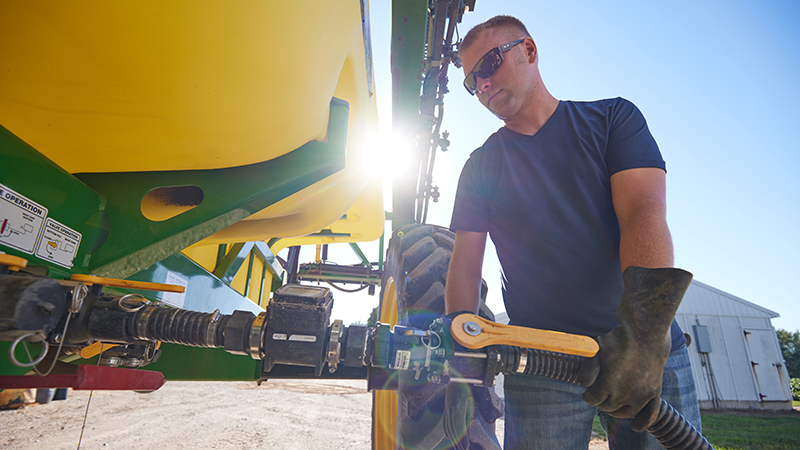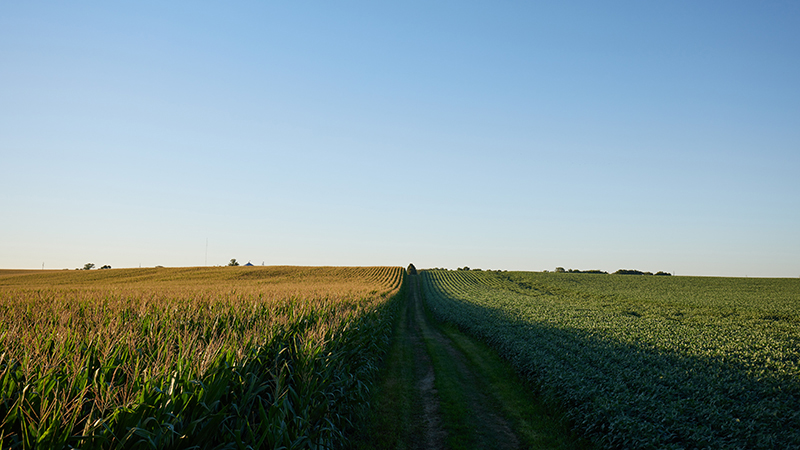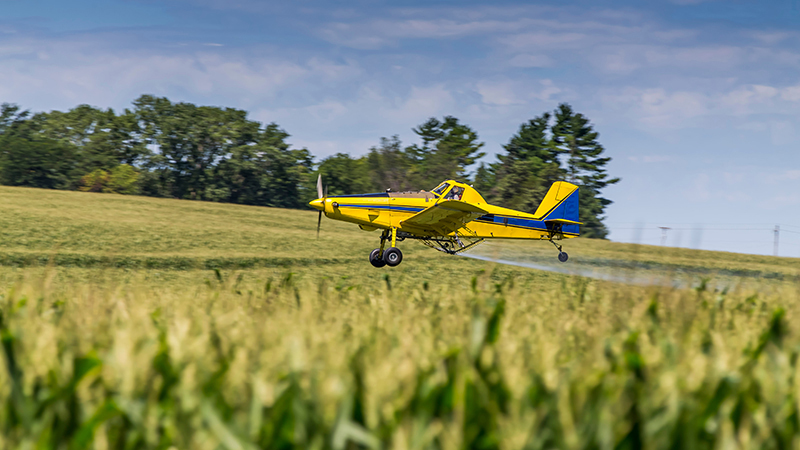4 Tips For Fungicide Applications
It’s time to bust the myth once and for all that fungicides aren’t worth investing in. Research has continually shown yield advantages when a fungicide application is made. In fact, WinField United Answer Plot® trials have consistently shown an average of more than 10 bushel per acre increases in corn yields when a fungicide is applied.
The question is: How can application strategies be tweaked to get the greatest ROI potential? Here are some ideas.
1. Choose the Right Products
Selecting the right fungicide products may seem like a no brainer but it’s easier said than done. It also has a major impact on fungicide efficacy. When making the decision, there are many factors to consider:
• In corn, a hybrid’s response-to fungicide (RTF) score is based on randomized, replicated research trials conducted at WinField United Answer Plot locations where more than 200 hybrids are tested each year. Hybrids with high to medium RTF scores respond greatly to a fungicide application, which means investing in a premium product will likely pay off on those acres. Those with low RTF scores may result in a smaller yield advantage, so a lower cost option may be best for those fields.
• In soybeans, a variety’s disease tolerance is an important factor. Soybean varieties more susceptible to disease may be the best candidates for premium fungicides to maximize control and, in turn, optimize yield potential.
• Weather is also important as it can be an indication of expected disease and stress prevalence. Yield potential changes with any major weather patterns, and fungicides can have an impact in both wet and dry scenarios. Wet conditions can lead to disease, warranting a fungicide application for disease control. Crops experiencing dry conditions would likely benefit from the strobilurin component of fungicides that provides stress mitigation and plant physiology benefits under stressful conditions.
• Disease type and prevalence is another key consideration. Not all products will work on all diseases. Anticipate the type of diseases common to your geography or weather conditions and choose the right product to address that disease spectrum. However, low disease pressure doesn’t always mean there’s no need for fungicides. Answer Plot data indicates fungicides still pay off when disease is relatively low within the field, thanks to the plant health benefits of strobilurin products.
2. Determine Optimal Timing
The most traditional time to apply a fungicide is around VT or tassel. At that point, the corn still has about 55-60 days before the grain matures so the main management goal is to protect the plant from disease to maximize grain fill. Based on Answer Plot test results, this is the best time to make an application if a grower can only do one.
Backing up a couple growth stages, V10 through V14 is another great opportunity to begin applying a fungicide. This is when the corn plant is determining the potential ear length and how many kernels it will contain, which directly impacts yields. Stressors like heat, drought and disease during this time period could impact those characteristics and cause a loss in yield potential. Taking advantage of the plant health and physiological benefits of fungicides could help to maximize yield potential during this growth stage.
When making timing decisions, it’s also important to consider a product’s residual activity. With some of the older products, a 21-day period of residual activity is typically estimated and targeted for tassel time applications, so they last as far into grain fill as possible. Some of the newer products with next-generation triazoles or SDHI active ingredients have a longer residual activity period that may be better fit for pre-tassel applications with ground equipment.
In soybeans, the most optimal timing is around R3 when the pods are just starting to form. Depending on the soybean maturity, however, R3 can last several weeks. Even if a fungicide application is made at the beginning of R3, growers and retail agronomists should begin scouting 2-3 weeks later to see if another fungicide and/or insecticide application is warranted.
3. Prioritize Applications
While it would be great to apply fungicides to every acre exactly when they would respond most, it’s not logistically possible for every field to be sprayed at the most optimal time. Maybe it’s due to weather, maybe to a backlog in available applicators or product shortages. Whatever the reason, it’s important to prioritize applications to make fungicide investments work the hardest.
Once again, RTF scores are valuable in these scenarios. Prioritize the high- and moderate-RTF hybrids since you know those are likely to show the greatest return but don’t neglect low-RTF hybrids. There’s a misconception that low-RTF hybrids don’t benefit from a fungicide but, while it’s true they’re not going to respond quite as well, given the right weather conditions and right disease, they can still show positive impacts from a fungicide. So, while high- and medium-RTF hybrids are being sprayed, take time to scout fields with low-RTF products to see what and how much disease there is and decide from there.
4. Ensure Sufficient Coverage
To maximize the efficacy of a fungicide product, sufficient coverage is a must. One of the most influential factors that impacts coverage is the amount of water that’s applied. While an airplane is going to apply around 2 gallons per acre, a ground sprayer will apply up to 20 gallons per acre. Naturally, the higher rate of the ground sprayer will lead to more coverage on the plant.
With an aerial application especially, when coverage is already limited by the amount of water being used, a product like MasterLock® adjuvant can help keep that small, valuable solution volume from drifting off course to help ensure more product makes it to the target. In fact, data shows a 5.7-bushel per acre average yield increase in corn when MasterLock adjuvant is added to the spray tank along with a fungicide, compared to using a fungicide alone.1
For more information on fungicide applications and MasterLock adjuvant, visit WinFieldUnited.com or contact your WinField United representative.
1WinField United. 14 studies, eight states, all fungicides. 2012–2017.
All photos are either the property of WinField United or used with permission.
© 2023 WinField United. Important: Before use always read and follow label instructions. Crop performance is dependent on several factors many of which are beyond the control of WinField United, including without limitation, soil type, pest pressures, agronomic practices and weather conditions. Growers are encouraged to consider data from multiple locations, over multiple years and to be mindful of how such agronomic conditions could impact results. Answer Plot, MasterLock and WinField are trademarks of WinField United. All other trademarks are the property of their respective owners.


